When the Olympics Gave Out Medals for Art
In the modern Olympics’ early days, painters, sculptors, writers and musicians battled for gold, silver and bronze
/https://tf-cmsv2-smithsonianmag-media.s3.amazonaws.com/filer/6d/ba/6dba3359-d79c-4703-85e8-7e9ee61209a8/screen_shot_2021-06-22_at_120735_pm.png)
At the 1912 Summer Olympics in Stockholm, American Walter Winans took the podium and waved proudly to the crowd. He had already won two Olympic medals—a gold for sharpshooting at the 1908 London Games, as well as a silver for the same event in 1912—but the gold he won at Stockholm wasn’t for shooting, or running, or anything particularly athletic at all. It was instead awarded for a small piece of bronze he had cast earlier that year: a 20-inch-tall horse pulling a small chariot. For his work, An American Trotter, Winans won the first ever Olympic gold medal for sculpture.
For the first four decades of competition, the Olympics awarded official medals for painting, sculpture, architecture, literature and music, alongside those for the athletic competitions. From 1912 to 1952, juries awarded a total of 151 medals to original works in the fine arts inspired by athletic endeavors. Now, on the eve of the 100th anniversary of the first artistic competition, even Olympics fanatics are unaware that arts, along with athletics, were a part of the modern Games nearly from the start.
“Everyone that I’ve ever spoken to about it has been surprised,” says Richard Stanton, author of The Forgotten Olympic Art Competitions. “I first found out about it reading a history book, when I came across a little comment about Olympic art competitions, and I just said, ‘what competitions?’” Propelled by curiosity, he wrote the first—and still the only—English-language book ever published on the subject.
To learn about the overlooked topic, Stanton had to dig through crumbling boxes of often-illegible files from the International Olympic Committee archives in Switzerland—many of which hadn’t seen the light of day since they were packed away decades ago. He discovered that the story went all the way back to the Baron Pierre de Coubertin, the founder of the IOC and the modern Games, who saw art competitions as integral to his vision of the Olympics. “He was raised and educated classically, and he was particularly impressed with the idea of what it meant to be a true Olympian—someone who was not only athletic, but skilled in music and literature,” Stanton says. “He felt that in order to recreate the events in modern times, it would be incomplete to not include some aspect of the arts.”
At the turn of the century, as the baron struggled to build the modern Olympics from scratch, he was unable to convince overextended local organizers of the first few Games in Athens, St. Louis and Paris that arts competitions were necessary. But he remained adamant. “There is only one difference between our Olympiads and plain sporting championships, and it is precisely the contests of art as they existed in the Olympiads of Ancient Greece, where sport exhibitions walked in equality with artistic exhibitions,” he declared.
Finally, in time for the 1912 Stockholm Games, he was able to secure a place for the arts. Submissions were solicited in the categories of architecture, music, painting, sculpture and literature, with a caveat—every work had to be somehow inspired by the concept of sport. Some 33 (mostly European) artists submitted works, and a gold medal was awarded in each category. In addition to Winans’ chariot, other winners included a modern stadium building plan (architecture), an “Olympic Triumphal March” (music), friezes depicting winter sports (painting) and Ode to Sport (literature). The baron himself was among the winners. Fearing that the competitions wouldn’t draw enough entrants, he penned the winning ode under the pseudonyms George Hohrod and Martin Eschbach, leaving the medal jury unaware of the true author.
Over the next few decades, as the Olympics exploded into a premier international event, the fine arts competitions remained an overlooked sideshow. To satisfy the sport-inspired requirement, many paintings and sculptures were dramatic depictions of wrestling or boxing matches; the majority of the architecture plans were for stadiums and arenas. The format of the competitions was inconsistent and occasionally chaotic: a category might garner a silver medal, but no gold, or the jury might be so disappointed in the submissions that it awarded no medals at all. At the 1928 Amsterdam Games, the literature category was split into lyric, dramatic and epic subcategories, then reunited as one for 1932, and then split again in 1936.
Many art world insiders viewed the competitions with distrust. “Some people were enthusiastic about it, but quite a few were standoffish,” Stanton says. “They didn't want to have to compete, because it might damage their own reputations.” The fact that the events had been initiated by art outsiders, rather than artists, musicians or writers—and the fact that all entries had to be sport-themed—also led many of the most prominent potential entrants to decide the competitions were not worth their time.
Still, local audiences enjoyed the artworks—during the 1932 Games, nearly 400,000 people visited the Los Angeles Museum of History, Science and Art to see the works entered—and some big names did enter the competitions. John Russell Pope, the architect of the Jefferson Memorial, won a silver at the 1932 Los Angeles Games for his design of the Payne Whitney Gymnasium, constructed at Yale University. Italian sculptor Rembrandt Bugatti, American illustrator Percy Crosby, Irish author Oliver St. John Gogarty and Dutch painter Isaac Israëls were other prominent entrants.
In 1940 and 1944, the Olympics were put on hold as nearly all participating countries became embroiled in the violence and destruction of World War II. When they returned, the art competitions faced a bigger problem: the new IOC president’s obsession with absolute amateurism. “American Avery Brundage became the president of the IOC, and he was a rigid supporter of amateur athletics,” Stanton says. “He wanted the Olympics to be completely pure, not to be swayed by the weight of money.” Because artists inherently rely on selling their work for their livelihood—and because winning an Olympic medal could theoretically serve as a sort of advertisement for the quality of an artist’s work—Brundage took aim at the art competitions, insisting they represented an unwelcome incursion of professionalism. Although Brundage himself had once entered a piece of literature in the 1932 Games’ competitions and earned an honorable mention, he stridently led a campaign against the arts following the 1948 Games.
After heated debate, it was eventually decided that the art competitions would be scrapped. They were replaced by a noncompetitive exhibition to occur during the Games, which eventually became known as the Cultural Olympiad. John Copley of Britain won one of the final medals awarded, a silver in 1948 for his engraving, Polo Players. He was 73 years old at the time, and would be the oldest medalist in Olympic history if his victory still counted. The 151 medals that had been awarded were officially stricken from the Olympic record, though, and currently do not count toward countries’ current medal counts.
Still, half a century later, the concept behind the art competitions lingers. Starting in 2004, the IOC has held an official Sport and Art Contest leading up to each summer Games. For the 2012 contest, entrants sent sculptures and graphic works on the theme of “Sport and the Olympic values of excellence, friendship and respect.” Though no medals were at stake, winners received cash prizes, and the best works were displayed in London during the Games. Somewhere, the Baron Pierre de Coubertin might be smiling.
/https://tf-cmsv2-smithsonianmag-media.s3.amazonaws.com/accounts/headshot/joseph-stromberg-240.jpg)

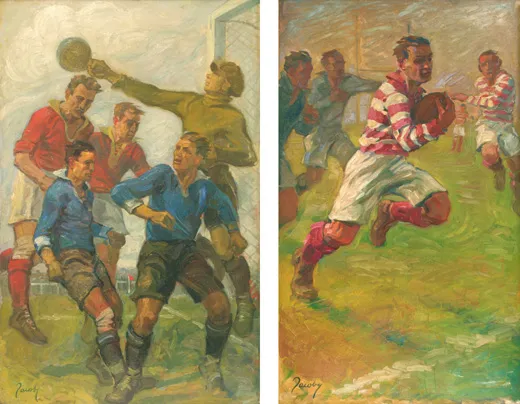
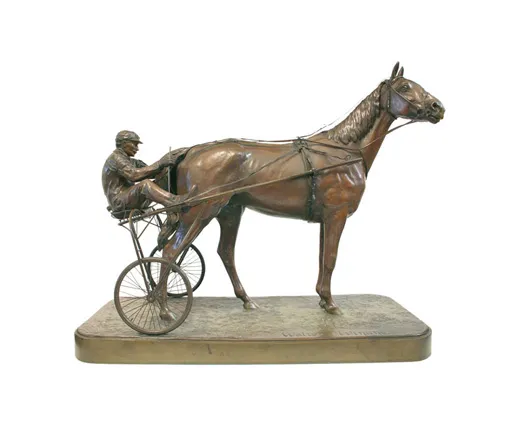
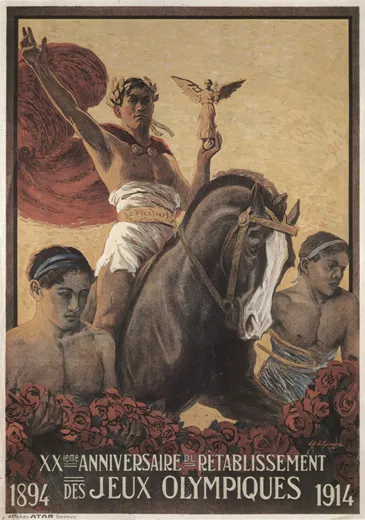

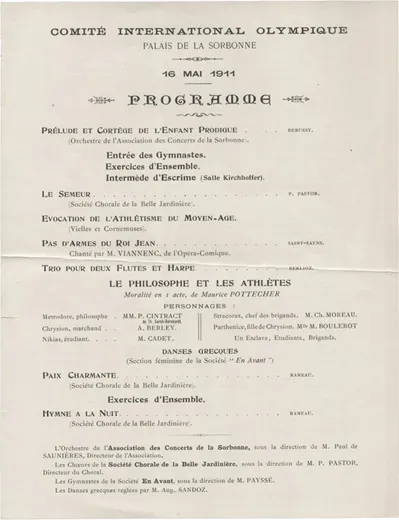
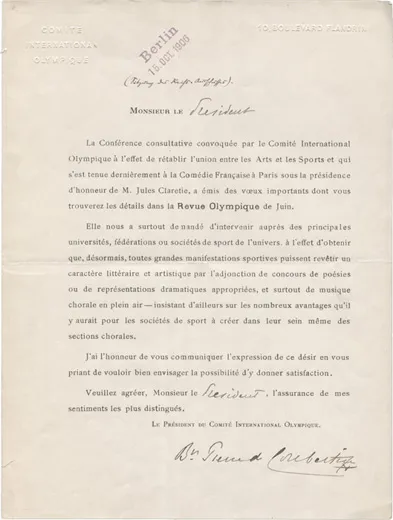
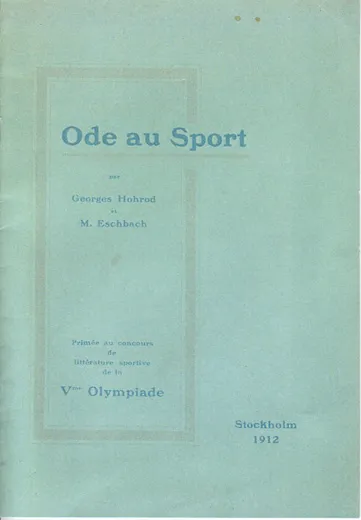
/https://tf-cmsv2-smithsonianmag-media.s3.amazonaws.com/accounts/headshot/joseph-stromberg-240.jpg)